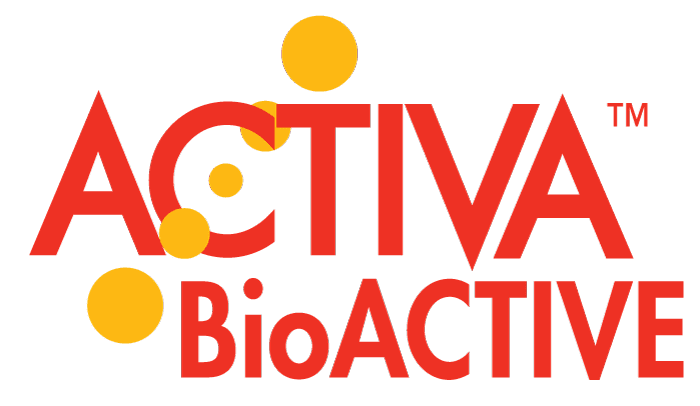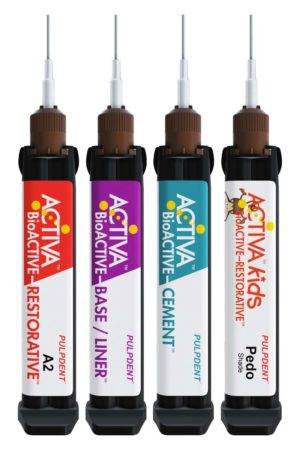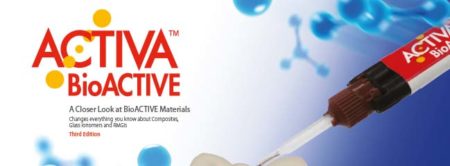
ACTIVA™ BioACTIVE-RESTORATIVE™

Restaurativ – Dual Cure – Hohe Viskosität – Formgebung/Aufbau – Fluorid, Calcium & Phosphat
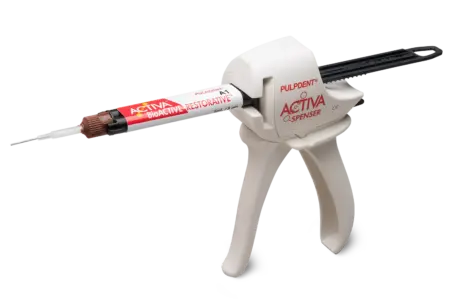
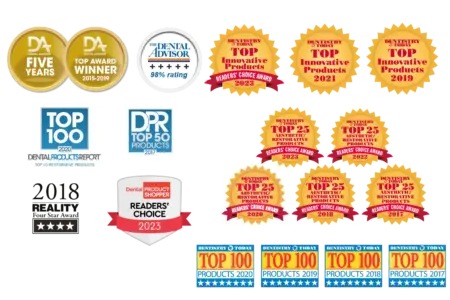
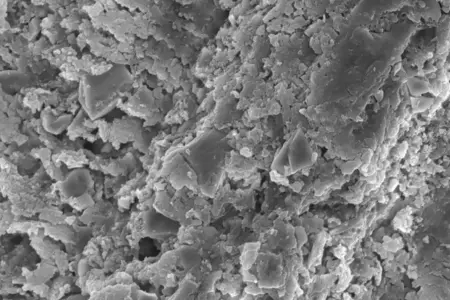
Effizientere Versorgungen und bessere Patientenergebnisse
Hochästhetisches, BPA-freies bioaktives Füllungsmaterial, das kontinuierlich gegen Mikroleckagen und Sekundärkaries schützt* – Von Klasse I/II und Bulk-Fill bis hin zu Klasse V ist ACTIVA™ BioACTIVE-Restorative die alltägliche Behandlungsoption der Wahl in Ihrem Kariesmanagement-Armamentarium.
* ACTIVA-BioACTIVE setzt nützliche Fluorid-, Kalzium- und Phosphationen frei und versiegelt gleichzeitig das Material und den Zahngrenzflächenrand durch Apatitkristallbildung, was vor Mikroleckagen schützt, der Hauptursache für Sekundärkaries und wiederkehrenden Karies.
Intelligentere Technologien, die sich klinisch bewährt haben und Ihnen und Ihren Patienten zugute kommen

HÄLT SPANNUNGEN STAND, DISSIPIERT KRAFT
Die patentierte MODULUS™-Elastomermonomertechnologie ist in die Kernchemie des Harzes integriert und verleiht Bruchfestigkeit durch Kraftdissipation und widersteht Polymerisationsschrumpfungsspannungen, was zu einer größeren physikalischen Stabilität und außergewöhnlichen Margen führt.

BioACTIVE™ Defense* gegen Sekundärkaries
Die ionische Ion-X™-Harzmatrix unterstützt die Bildung marginaler, versiegelnder Apatitkristalle durch die anhaltende Freisetzung von Kalzium, Phosphat und Fluorid & aufladen, während sie kontinuierlich den pH-Wert neutralisiert und Säureangriffe bekämpft

FEUCHTIGKEITSFREUNDLICHE ARBEITSDYNAMIK ermöglicht anspruchsvolle Restaurierungen unter realen Bedingungen
Die WETBOND™-Technologie führt durch ein proprietäres saures Phosphatmonomer (M1P) und eine proprietäre hydrophile Matrix zu einer besseren chemischen Versiegelung und ermöglicht erfolgreiche Restaurationen unter schwierigen oralen Bedingungen
SCHLÜSSEL-EIGENSCHAFTEN :
Dual Cure – Hohe Viskosität – Präzise Platzierung – Alle klinischen Indikationen – Klinisch bewährt – Minimiertes Risiko einer postoperativen Sensibilität
Vielseitiges, alltägliches Kariesmanagement
Class II Bulk Fill
Fallstudie: Schnelle Feuchtfeld-Bulkplatzierung bei einem pädiatrischen Patienten mit ACTIVA™ KIDS BioACTIVE-RESTORATIVE™
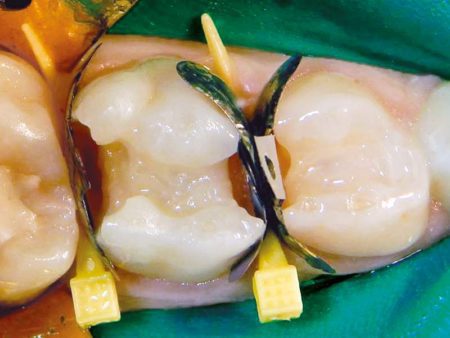
Vorbereitete Zähne
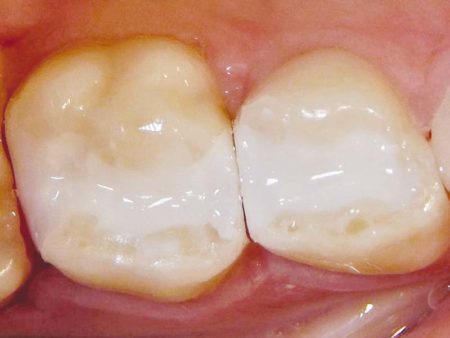
Mit ACTIVA restaurierte Zähne (Kinderzahnfarbe)
Foto du Dr. Mark Cannon
Feuchtigkeitsfreundlich und ideal für Klasse V
Fallstudie: Reparatur von empfindlichen Gebärmutterhalsläsionen
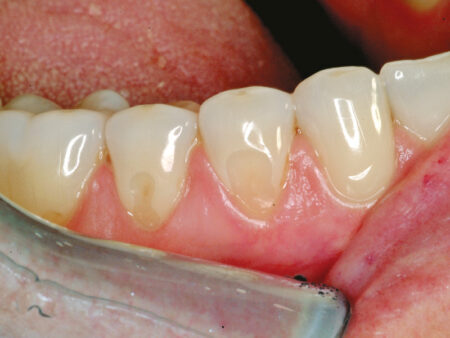
Zervikale Läsionen
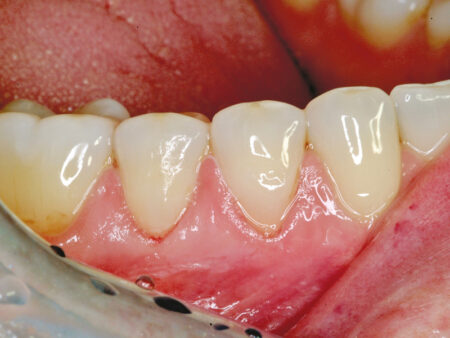
ACTIVA bietet Bioaktivität und Patientenkomfort
Foto du Dr. C. H. Pameijer
Core Buildup
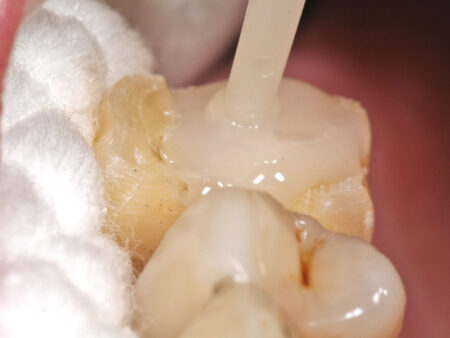
ACTIVA wird verwendet, um den Kern eines stark zerbrochenen Molaren aufzubauen.
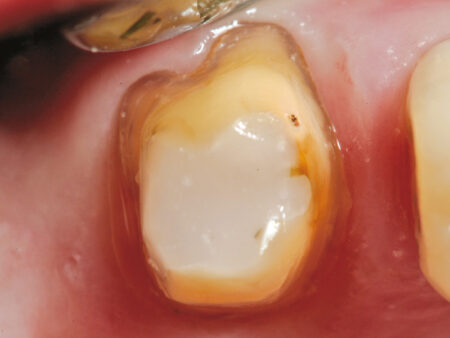
Der Zahn ist bereit, eine Krone zu erhalten.
Foto du Dr. Robert Lowe
Dr. DiTolla und Dr. Bergeron diskutieren über minimalinvasive, bioaktive Zahnmedizin für den Praxisalltag
In diesem Video wird Brittany Bergeron, DDS, eine Reihe von realen, minimalinvasiven Fallstudien mit bioaktiven Restaurationsmaterialien kritisch betrachten und die aktuelle Remineralisierungswissenschaft, feuchtigkeitsfreundliche Dentalprodukte, die Handhabungseigenschaften „aktiver“ Materialien und praktische, alltägliche Anwendungen für bioaktive Zemente, Komposite und Base/Liner diskutieren.
Dr. Barquero setzt 9 ACTIVA-Restaurationen in 1 Sitzung ein
Dr. Delfín Barquero zeigt, wie er mit ACTIVA BioACTIVE neun Restaurationen in einer einzigen Sitzung fertiggestellt hat.
MECHANISCHE EIGENSCHAFTEN :
Unabhängige Tests zeigen, dass Druckfestigkeit, Abnutzung und Haltbarkeit mit denen führender Komposite vergleichbar sind. Die Bruchfestigkeit ist besser als bei herkömmlichen Kompositen, kunststoffmodifizierten Glasionomeren (RMGI) und Glasionomeren (GI).
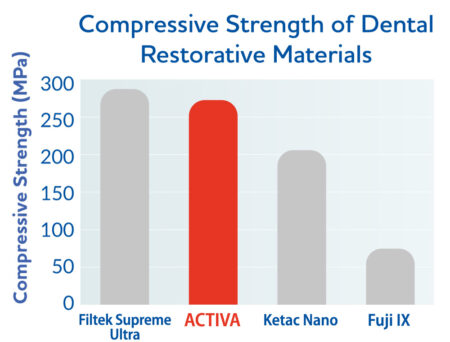
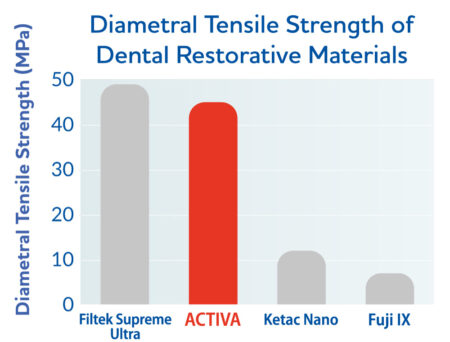
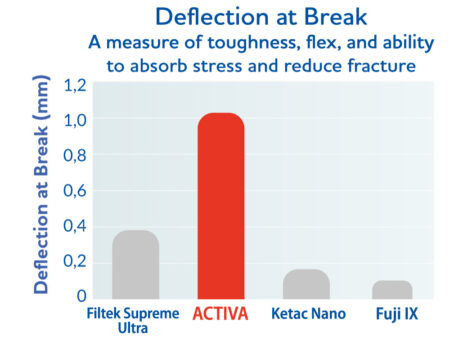
*Keine Marken der Pulpdent Corporation
KALZIUM-, FLUORID- UND PHOSPHATFREISETZUNG/-AUFFÜLLUNG :
Die folgenden Diagramme zeigen die Freisetzung und Aufladung von Kalzium, Phosphat und Fluorid aus vier Restaurationsmaterialien. ACTIVA BioACTIVE-RESTORATIVE (wie auch der Rest der ACTIVA BioACTIVE-Familie) zeigen eine kontinuierliche Freisetzung und Aufladung dieser essentiellen Mineralien, die natürlich im Speichel vorkommen und durch Nahrungsquellen und die Freisetzung aus ACTIVA ergänzt werden. Diese Diffusion von Ionen ist nur in Materialien möglich, die Wasser transportieren können. Herkömmliche hydrophobe Materialien sind passiv und verfügen nicht über die Fähigkeit zu diesem dynamischen Verhalten.
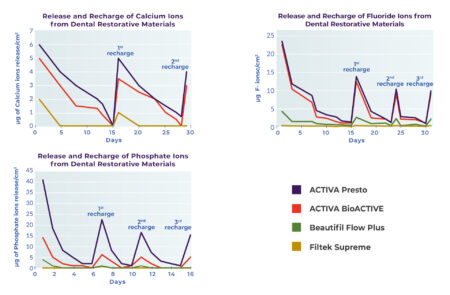
Quelle: Pulpdent-Tests
Code und Beschreibung:
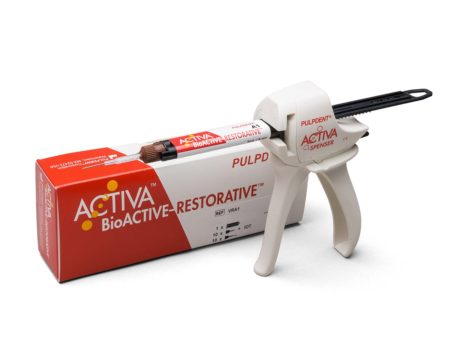
VR* – Starter Kit: 5mL/8gm Spritze, ACTIVA-SPENSER + 20 Automix-Tips mit biegsamer 20-Gauge-Metallkanüle (* Farbton angeben: A1, A2, A3)
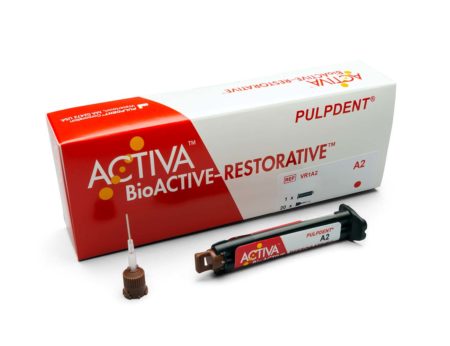
VR1* – Single Refill: 5mL/8gm Spritze + 20 Automix-Tips mit biegsamer 20-Gauge-Metallkanüle (* Farbton angeben: A1, A2, A3, A3.5)
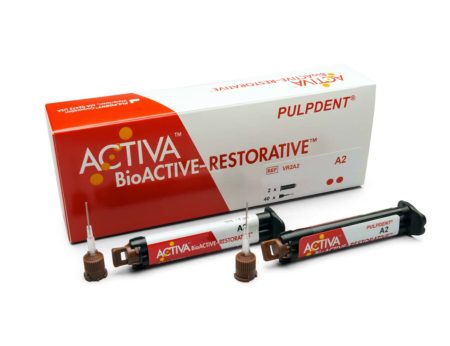
VR2* – Value Refill: 2 x 5mL/8gm Spritze + 40 Automix-Tips mit biegsamer 20-Gauge-Metallkanüle (* Farbton angeben: A1, A2, A3, A3.5)

DS05 – ACTIVA Spenser: Spender für 5mL Automix-Spritzen
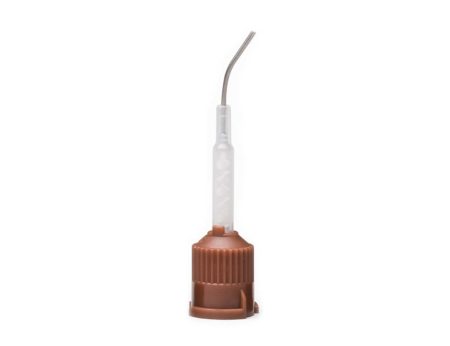
A20N1 – Automix Tips, klar, mit biegsamer 20-Gauge-Metallkanüle – Packung mit 20 Stück Verwendung für ACTIVA und für 2.5mL, 5mL und 10mL 1:1 Automix-Spritzen

A50N1 – Automix Tips, klar, mit biegsamer 20-Gauge-Metallkanüle – Packung mit 50 Stück Verwendung für ACTIVA und für 2.5mL, 5mL und 10mL 1:1 Automix-Spritzen
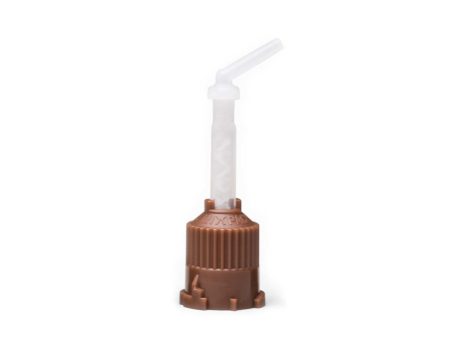
AD20T – Automix Tips, klare + kurze intraorale Spitzen (IOT) – Pkg. 20

AD50T – Automix Tips, klare + kurze intraorale Spitzen (IOT) – Pkg. 50
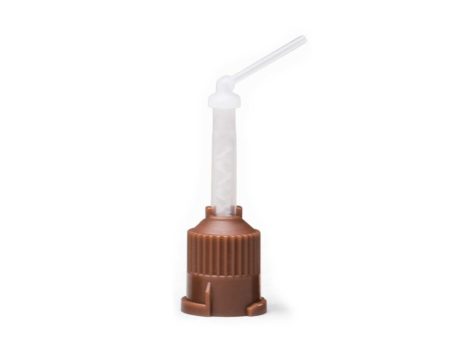
AD20R – Automix Tips, klar + lange, schmale intraorale Spitzen (IOR) – Packung mit 20 Stück

AD50R – Automix Tips, klar + lange, schmale intraorale Spitzen (IOR) – Packung mit 50 Stück
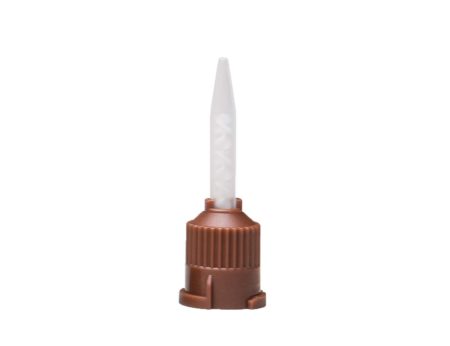
AS20 – Automix-Spritzenspitzen, Pkg. 20 5mL Spritze

AS50 – Automix-Spritzenspitzen, Pkg. 50 5mL Spritze




